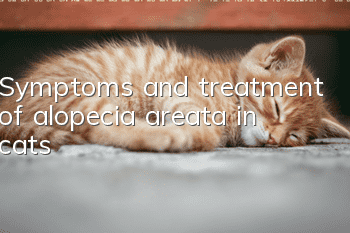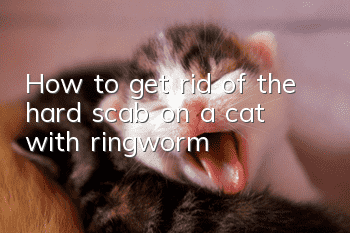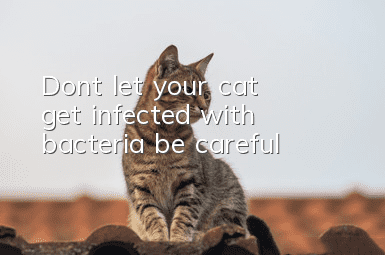Symptoms and treatment of alopecia areata in cats

We all hope that our cats can grow up healthily and happily, but cats will get sick for various reasons in life. At this time, what the owner should do is to understand the cat’s illness and actively cooperate with the doctor’s treatment. Cats are bald. Ringworm is a relatively common disease among skin diseases. It has a wide source of infection and is easy to relapse. If a cat is infected with ringworm, cat owners can treat it according to the following methods.
1. There are two types of pathogens of trichophyton alopecia, namely Trichophyton and Microsporum. Trichophyton alopecia in cats is mostly caused by Microsporum. This small spore-forming bacterium exists on the surface of the skin, in the hard skin and scales, in the hair follicles, around the hair roots or on the hair bodies. It forms a large number of spores when the sick cat scratches or rubs it on various objects, or licks each other with other cats. When licked, the spores may be spread, causing the disease to expand. Since the spores are highly resistant to heat and disinfectant solutions and are difficult to kill, once the disease occurs, it is difficult to completely treat it.
2. Since the clinical symptoms of this disease are relatively obvious and have certain characteristics, the diagnosis can often be made based on the clinical manifestations. The most common areas of cat alopecia are the face, trunk, tail and limbs, where round tinea spots appear, covered with gray scales, and the hair in the tinea spots is broken or fallen off. The sick cat has severe itching and often rubs it on various objects. The course of the disease is long, and bald spots form after the scales fall off.
3. For atypical cases, it is difficult to diagnose based on clinical symptoms. At this time, the disease materials, such as skin flakes at the junction of disease and health, broken hair roots, etc., should be collected and properly treated with 10% sodium hydroxide solution. Perform microscopic examination and confirm the diagnosis if microspores are seen in the transparent hairy roots.
4. The key to preventing this disease is to clean and sanitize the cat's skin, bathe and comb the cat frequently. In addition, contact between healthy cats and sick cats should be prevented. To treat sick cats, you should first cut off the coat of the affected area and its surroundings, soak and wash the affected area with hot soapy water to soften the hard skin. Then wash the affected area with warm 3 to 5% Clialin solution to remove the softened scab. After the affected area is dry, apply 10% iodine tincture locally.
5. Or 10% salicylic acid alcohol or salicylic acid ointment, once a day initially, then once every 1 to 2 days until recovery. Griseofulvin can effectively inhibit epidermophyton such as Microsporum. It is mainly taken orally and should be taken continuously until the diseased tissue is completely replaced by healthy tissue. The dosage is 20-25 mg/kg body weight. The griseofulvin currently produced in my country is particulate type. If non-particulate type is used, the dose should be increased. During the period of medication, feeding and management must be strengthened and sanitary conditions must be improved. Applying 3 to 5% clotrimazole ointment locally has a good effect on cat alopecia and ringworm.
- How to train a cat not to go to bed How to train a cat not to go to bed
- Cat vomits when it eats
- Why do cats like to hold their little hands?
- What should I do if my cat bites people even if it refuses to cut its nails?
- How to prevent cats from scratching walls. Train cats not to scratch walls.
- What should you pay attention to after urethrostomy surgery in male blue cats?
- What to do if a cat is anorexic? Most cats can regain their appetite after treatment
- One of the few things cat owners must pay attention to is whether I can spank a cat. Attention cat owners!
- Why doesn’t anyone keep Selkirk Rex cats?
- Why do short-legged cats have short legs?



